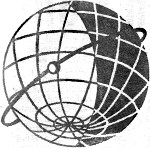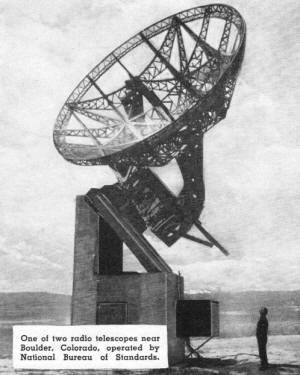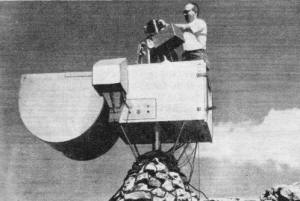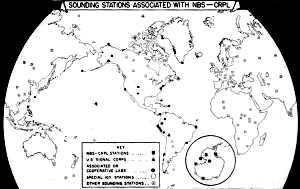National Bureau of Standards' Role in IGY |
||
The International Geophysical Year (IGY) ran from July 1957 through December 1958 and was designed to promote cooperation between countries in the earth sciences realm of research. In all, 67 countries participated in various IGY projects. China declined involvement based on objections to Taiwan being involved, arguably perpetuating its people's languishing behind the Iron Curtain of Communism much longer than it otherwise would have. Global studies were carried out for the aurora and airglow, cosmic rays, geomagnetism, gravity, the ionosphere, longitude and latitude determinations, meteorology, oceanography, seismology, and solar activity. It was during this period that the USSR launched Sputnik and the Van Allen radiation belts were discovered. This article reports on the radio-communications-related IGY activities of the U.S. National Bureau of Standards (NBS, now the National Institute of Standards and Technology - NIST). National Bureau of Standards' Role in IGY  Results will provide valuable information in fields of meteorology and radio communications. The National Bureau of Standards is playing an active, many-faceted role in the International Geophysical Year of 1957-58. From observation stations widely scattered over the globe, the Bureau is collecting and analyzing data on many phases of upper atmospheric physics and radio propagation. Centered in the Boulder Laboratories (Colorado) where most NBS radio propagation research is carried on, the Bureau's part in the program includes studies of the ionosphere, forward scatter propagation, various kinds of radio noise, airglow, and related phenomena. The greatest part of the Bureau's effort will be concerned with variations in the ionosphere. Because of its extensive studies along these lines, the Bureau has been given responsibility for the ionospheric data program in the Western Hemisphere. As part of this phase, the study of sporadic-E propagation will be intensified through the operation of controlled circuits. One of two radio telescopes near Boulder, Colorado, operated by National Bureau of Standards. Sensitive photoelectric photometer used to observe airglow. In cooperation with several South American laboratories, research will be conducted into ionospheric forward scatter in the equatorial region. Further investigation of scatter will be made in the Caribbean in cooperation with the Navy and in the Far East in conjunction with the "Voice of America" and the Japanese Radio Research Labs. The Bureau is also expected to learn more about radio interference and propagation through a study of radio noise. Sixteen worldwide noise-observation stations have been set up. In addition, a systematic recording and study of airglow, a faint night-sky luminescence, will be undertaken with telescopic photometers. Two airglow observing stations have been set up and photometers have been supplied to others in the American chain of 13 stations. Special sounding stations set up for the IGY observations. Focal point of the day-to-day system for observation coordination is the Bureau's radio forecasting center near Washington. From this nerve center, warnings are flashed to scientists throughout the world for special conditions of observation.
Posted March 23, 2021 |
||



